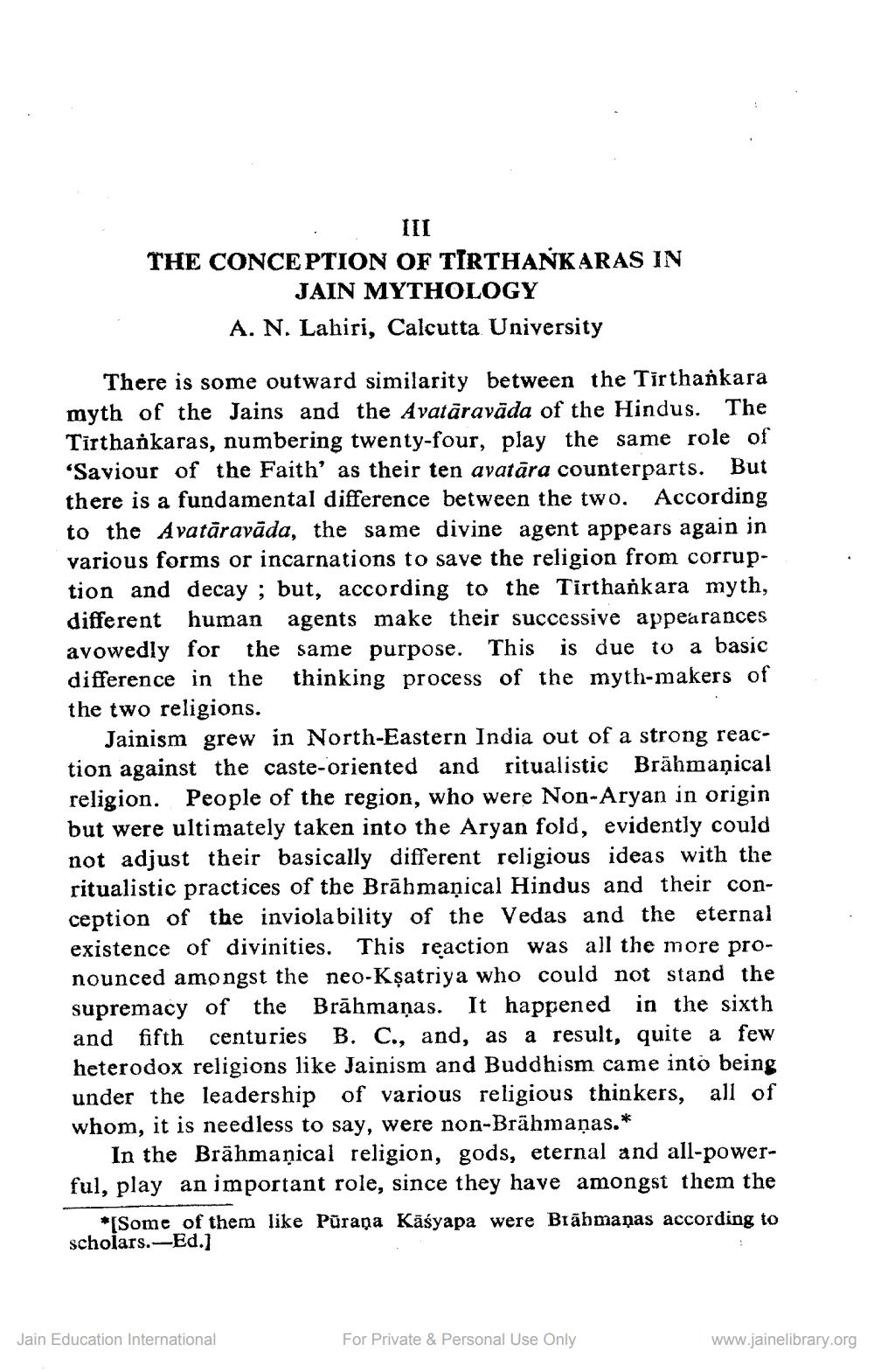________________
III
THE CONCEPTION OF TIRTHANKARAS IN JAIN MYTHOLOGY
A. N. Lahiri, Calcutta University
There is some outward similarity between the Tirthankara myth of the Jains and the Avataravada of the Hindus. The Tirthankaras, numbering twenty-four, play the same role of 'Saviour of the Faith' as their ten avatāra counterparts. But there is a fundamental difference between the two. According to the Avatāravāda, the same divine agent appears again in various forms or incarnations to save the religion from corruption and decay; but, according to the Tirthankara myth, different human agents make their successive appearances avowedly for the same purpose. This is due to a basic difference in the thinking process of the myth-makers of the two religions.
Jainism grew in North-Eastern India out of a strong reaction against the caste-oriented and ritualistic Brāhmaṇical religion. People of the region, who were Non-Aryan in origin but were ultimately taken into the Aryan fold, evidently could not adjust their basically different religious ideas with the ritualistic practices of the Brāhmaṇical Hindus and their conception of the inviolability of the Vedas and the eternal existence of divinities. This reaction was all the more pronounced amongst the neo-Kṣatriya who could not stand the supremacy of the Brahmaņas. It happened in the sixth and fifth centuries B. C., and, as a result, quite a few heterodox religions like Jainism and Buddhism came into being under the leadership of various religious thinkers, all of whom, it is needless to say, were non-Brāhmaṇas.*
In the Brahmanical religion, gods, eternal and all-powerful, play an important role, since they have amongst them the *[Some of them like Purana Kasyapa were Brahmanas according to scholars.-Ed.]
Jain Education International
For Private & Personal Use Only
www.jainelibrary.org




